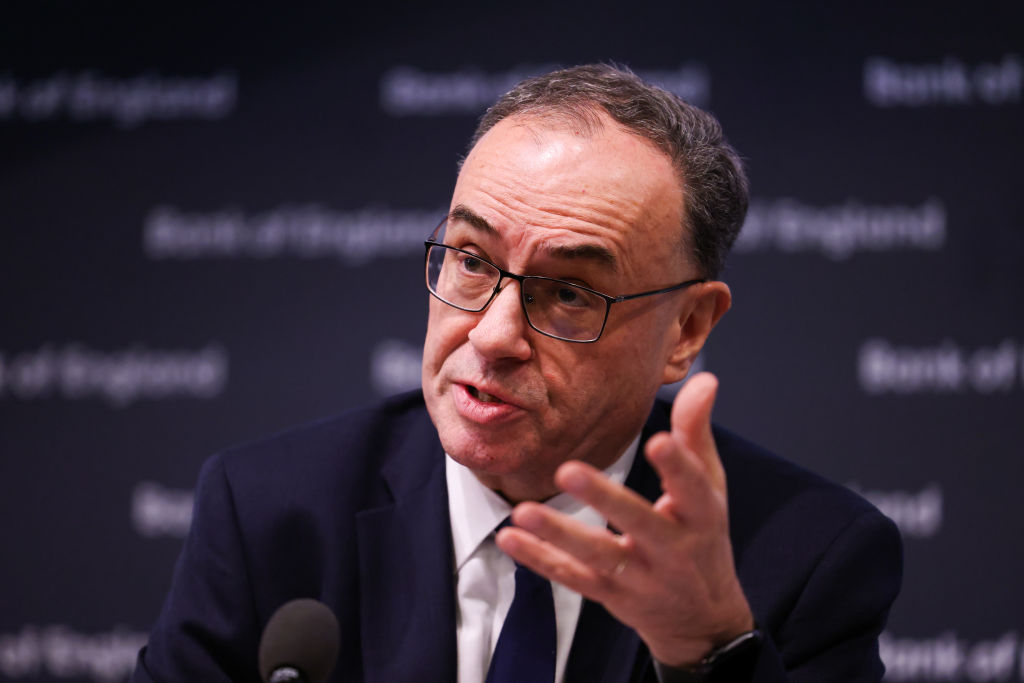Summary
- UK inflation, as measured by the Consumer Prices Index (CPI), rose to 3% in January, coming in higher than analysts' forecast of 2.8%.
- January's inflation figure is the highest since March 2024.
- It follows a surprise drop in the CPI rate in December, when the headline figure fell from 2.6% to 2.5%.
- The main categories which pushed CPI higher in January were transport (notably airfares) and food and non-alcoholic beverages.
- Meanwhile, the largest downward contribution came from housing and household services.
- Educational costs also rose by 7.5% on an annual basis in January, up from 5% in December, driven by the government's new policy of imposing VAT on private school fees.
- Going forward, inflation is expected to rise further over the course of the year, potentially hitting 3.7% in the third quarter, according to the latest forecast from the Bank of England. Higher global energy prices are expected to be the main driver.
The team at MoneyWeek is reporting live. Scroll for the latest news and analysis.
| What is inflation? | Inflation forecast | CPI release dates | Interest rate predictions |
One day to go until January’s inflation report
Good Tuesday afternoon, and welcome to MoneyWeek’s inflation live blog. The sun is shining in London today and it feels like spring is on the way. The outlook for inflation is less bright, though.
The headline CPI figure is expected to come in at 2.8% tomorrow, up from 2.5% in December. A bounce in airfares and the introduction of VAT on private school fees are two factors that could contribute to the rise.
It comes after the Bank of England recently warned that inflation could hit 3.7% in the third quarter of this year, primarily driven by a rise in global energy prices. The Bank is pleased with the progress we are seeing in domestic parts of the economy, though, and expects this inflation bump to be relatively short-lived.

Inflation forecast: naturally, not everyone agrees
While most analysts seem to be forecasting a headline figure of 2.8%, not everyone agrees. In its UK economic outlook published last week, the National Institute of Economic and Social Research (NIESR) said it expects inflation to rise to 3.2% in January, before slowly falling back to target. It expects inflation to average out at 2.4% in 2025 as a whole.
Meanwhile, the economists at investment bank Deutsche Bank are forecasting a headline figure of 2.9%. Senior economist Sanjay Raja writes: “Our models point to headline CPI pushing up to 2.9% year-on-year. We see core CPI pushing higher to 3.8%. Services CPI, we think, will move up to 5.25%. And the Retail Prices Index (RPI), we estimate, will push higher to 3.7%.”
Wage growth accelerates – what does it mean for inflation?
The ONS published the UK’s latest labour market report this morning, which showed wage growth accelerated in the period between October and December. Regular earnings grew by 5.9% on an annual basis during the period, up from 5.6% in the previous three-month period. Meanwhile, total wage growth (including bonuses) came in at 6%, up from 5.5% previously. Wages are a big driver of inflation, so this could spell bad news for future price increases.
That said, businesses have warned that the labour market could take a hit later this year when new tax policies come into effect in April. The government is raising employers’ National Insurance contributions, and businesses have warned they may need to reduce working hours or headcount to offset the effects. Wage growth is expected to slow too, as employers look to mitigate the effects of an increasingly expensive wage bill by limiting the size of any pay rises.
Commenting on the outlook for the labour market, Danni Hewson, head of financial analysis at investment platform AJ Bell, said: “It feels like we’re enjoying the calm before the storm. Big black clouds are swirling on the horizon if you factor in all the surveys and data from recruitment agencies which suggests that businesses are cutting back on their hiring intentions for the year and will consider job cuts and smaller wage hikes after April.”
What are the private school VAT changes and why do they matter for inflation?
One of the government’s election promises was to end the VAT exemption on private school fees, using the money to recruit more teachers into the state sector. This policy came into effect at the start of January.
Not all schools raised their fees by the full 20%. However, a survey of 964 schools conducted by The Telegraph last year showed that around half were planning to increase their fees by 15% or more. A fifth, including the famous Eton College, said they would be increasing fees by the full amount. As a result, one of the categories that is expected to rise in January’s inflation report is educational costs.
Deutsche Bank expects the VAT policy to push primary and secondary school fees up by 12.5%, which it says would lift the education basket by 4.1% month-on-month.

Kantar data points to a slowdown in grocery inflation
Data published by market research firm Kantar suggests grocery inflation slowed to 3.3% in January, down from 3.7% in December. It is worth remembering that a positive inflation figure means prices are still rising overall, just at a slower rate than they once were.
Responding to the slowdown in the rate of price increases, Fraser McKevitt, head of retail and consumer insight at Kantar, said: “With household budgets typically stretched at this time of year, retailers played their part in easing the pressure on purse strings. Supermarkets were dishing out the discounts this New Year, and consumers responded. Spending on promotions rose year-on-year by £274 million, accounting for 27.2% of sales – the highest level in January since 2021.
“People also turned to non-branded products to help keep costs down, with own label products as a proportion of sales hitting a record high of 52.3% in January.”
Services inflation could rise tomorrow before falling back in the Spring
Services inflation slowed from 5% to 4.4% in last month’s CPI report, partly driven by a smaller rise in airfares than is typically seen in the final month of the year.
The metric is expected to bounce back in January’s report, potentially even hitting 5.25%, according to Deutsche Bank. However, we should see further disinflation in the services sector in the spring.
Analysis from European bank ING points out that several items in the services basket come with index-linked contracts. This includes things like broadband and phone deals which come up for renewal once a year – typically in April.
These are often linked to past rates of CPI or RPI inflation, which was more muted in 2024 than 2023. With this in mind, the economists at ING expect the annual price hikes to be “less aggressive” in April this year than they were last year.
Why is services inflation so important?
Services CPI is closely-watched by the Bank of England, as it is a good gauge of how embedded inflationary pressures are in the domestic economy. The services sector accounts for around 80% of the UK’s economic output. Until recently, services CPI has been persistently high.
The longer-term inflation outlook
Higher global energy prices are expected to push inflation up later this year. For example, the Ofgem energy price cap is expected to rise by around 5% in April, according to forecasts from consultancy Cornwall Insights.
Other factors could have an impact on prices too, including the rise in employers’ National Insurance contributions from April.
In a recent survey of 52 leading retailers (conducted by the British Retail Consortium), 67% said they were planning to hike their prices this year to offset the effect of higher staffing costs.
Further afield, US president Donald Trump has already started imposing tariffs on imported products and there are fears this could add to global inflationary pressures, if other countries respond and it turns into a full-blown trade war.
Looking ahead, the Bank of England expects inflation to hit 3.7% in the third quarter of this year. Consultancy Capital Economics thinks this is an overshoot, though.
“Our forecast is much lower than the Bank’s,” said Ruth Gregory, the consultancy’s deputy chief UK economist. “We think the loosening in the labour market will feed through to a faster fall in wage growth, causing services CPI inflation to fall faster too.”
There is currently a 0.9 percentage point difference between the forecasts from the Bank of England and Capital Economics.

A look across the pond at US inflation
January’s inflation report has already been published in the US, and it came in higher than expected at 3% (analysts had been forecasting 2.9%). The rate was the highest level for six months, partly driven by higher energy prices.
Going forward, “Trump’s policies of tariffs, tax cuts, deregulation and deportation are all expected to be inflationary to varying extents,” adds Lindsay James, investment strategist at wealth management firm Quilter.
Against this backdrop, officials at the US Federal Reserve have indicated that they are in no hurry to lower US interest rates further. Polling from news agency Reuters indicates the Fed will probably cut rates twice this year, however the range of responses was wide, with no majority view among economists.
Back to the UK: how many interest rate cuts in 2025?
Tomorrow’s inflation report could give us a better sense of how soon the Bank of England will deliver its next interest rate cut. The Monetary Policy Committee (MPC) cut rates at its first meeting of the year in February, bringing the base rate from 4.75% to 4.5%.
Despite the Bank warning that inflation could pick up to 3.7% later this year, two members of the MPC actually voted for a larger rate cut of 50 basis points. The overall message from the Bank, however, was that a “gradual and careful” approach to cutting rates remains appropriate.
Most economists are currently forecasting one rate cut per quarter over the course of 2025, bringing the base rate to around 4% by the end of the year.
Although higher global energy prices are likely to push the headline CPI figure up over the coming months, the Bank is largely pleased with the progress that has been made with disinflation in the domestic economy.

Join us at 7.00am tomorrow
Thank you for joining us for our preview analysis today. We will be back in the same place tomorrow, reporting live as the CPI report is published at 7.00am. See you then.
Welcome back
Welcome back to MoneyWeek’s inflation live blog. There’s less than half an hour to go until January’s CPI report is published. Stick with us as we report on the latest news and what it means for your investments and personal finances.
A quick recap
Let’s have a quick recap before January’s report is published in a few minutes’ time:
- UK inflation is expected to come in at 2.8% in January, up from 2.5% in December.
- This is above the Bank of England’s 2% target.
- Inflation experienced a surprise drop in December, but has been inching up overall after hitting a low of 1.7% in September last year.
- We have still made significant progress since the double-digit inflation seen a few years ago, though. Inflation peaked at 11.1% in October 2022.
- Inflation figures for January have already been published in the US and the Euro area, rising to 3% and 2.5% respectively (up from 2.9% and 2.4%).
BREAKING
The annual rate of inflation rose to 3% in January, up from 2.5% in December, according to the latest CPI report from the ONS.
January CPI: higher than expected
An inflation rate of 3% is higher than most analysts were expecting. The majority had forecast a rate of 2.8%. Analysts at Deutsche Bank went slightly higher at 2.9%, while the NIESR indicated inflation could go as high as 3.2% in January.
What drove the change in inflation in January?
The main categories which pushed CPI higher in January were transport and food and non-alcoholic beverages, according to the ONS. Meanwhile, the largest downward contribution came from housing and household services.
Core and services inflation are both up
Core and services inflation both also rose in January to 3.7% and 5% respectively, up from 3.2% and 4.4%.
Core inflation strips out volatile categories like food and energy, so can be a better gauge of the longer-term inflation trend. Meanwhile, services inflation is an important metric for the Bank of England as the services sector makes up around 80% of the UK economy.
Rebound in airfares pushed transport costs up
As anticipated, a rebound in airfares pushed transport costs up in January, partly contributing to the higher headline rate of inflation. Although airfares fell by 2% on an annual basis compared to the same period a year ago, this was down from a fall of 26% in December.
“Airfares tend to rise into December and fall into January,” the ONS explains. “However, in December 2024 and January 2025, this pattern was less pronounced than in previous years.”
Overall, transport costs rose by 1.7% in the year to January 2025, compared with a fall of 0.6% in the year to December 2024. Airfares were the main factor driving the higher figure, along with motor fuels. This was partially offset by a downward effect from second-hand cars.
Surge in educational costs
There was a large increase in educational costs in January, with the annual inflation rate for the category rising to 7.5%, up from 5% last month.
“The only item that changed price in the education division was private school fees, where prices rose by 12.7% on the month,” the ONS explains. This was compared to no change in the cost of this service a year ago.
The increase can be attributed to the new VAT policy which came into effect at the start of January. Private school fees used to be exempt from the tax, but are now subject to VAT at the standard rate of 20%.
Labour market “more of a problem” than inflation
The Bank of England will be analysing the latest CPI report closely. However, Patrick O’Donnell, senior investment strategist at asset management firm Omnis Investments, says yesterday’s labour market report is “more of a problem for the MPC than the inflation data today”.
The report showed that wages grew at an annual rate of 5.9% between October and December, up from 5.6% in the previous period. Accelerating wage growth is typically bad news for inflation – although businesses have warned that the labour market could weaken over the coming months thanks to tax changes announced in the Autumn Budget.
Commenting on the two reports together, O’Donnell says that “neither helps those looking for a March cut from the Bank of England”.
A balancing act for the Bank of England
The Bank of England has a dual mandate – to control inflation and support growth. This is becoming increasingly difficult.
Having slowed from its peak, inflation is picking up again. Meanwhile, the UK growth forecast for 2025 has recently been slashed in half from 1.5% to 0.75%. There are whispers of stagflation from economic commentators, however governor of the Bank of England Andrew Bailey recently rejected this term.
Commenting on the latest inflation figures, Paul Noble, chief executive of UK-based digital bank Chetwood Bank, said: “While factors driving the uptick – VAT changes and seasonal price shifts – were expected, these offer little comfort as concerns grow over the economy’s fragility. The Bank of England now faces a difficult balancing act.
“Having recently cut interest rates, policymakers may now be forced to reassess their approach. If inflation remains stubborn, further cuts could be delayed, prolonging financial strain for borrowers and businesses. However, keeping rates higher for too long risks deepening economic stagnation in stark contrast to the stable growth many are seeking.”
What does rising inflation mean for your personal finances?
Let’s turn our eye to what it all means for your personal finances. As well as pushing up the cost of your weekly shop (food and drink costs rose by 3.3% over the past year), inflation has significant implications for your savings, housing costs and investments. We will be delving into each over the next few posts.
Wake-up call for savers: inflation is now higher than the average easy-access savings rate
Savers should treat today’s inflation report as a wake-up call. The rate of inflation (3%) is now higher than the average interest rate on an easy-access savings account. This is currently 2.86%, according to financial information company Moneyfacts.
Savers can find a rate far better than this by shopping around. The highest-paying accounts currently offer up to 4.75%. At the very least, your account should be beating inflation, otherwise you are losing money in real terms.
Those who want to lock in higher interest rates for longer could consider a one or two-year fixed-rate account. Just make sure you are willing to lock the money away for the full period – and remember that any emergency funds should be kept in an easy-access account.
As the end of the tax year approaches, now is also a good time to use up any remaining ISA allowance, if you can. See our piece on cash ISAs – and why now could be your last change to grab 5% tax-free savings.
Mortgage rates: bad news for borrowers
The latest inflation report could spell bad news for prospective homeowners or those looking to refinance. It is possible that mortgage rates will inch up as markets assess what the higher inflation reading means for the interest rate outlook.
David Hollingworth, associate director at broker L&C Mortgages said: “Just as last month’s data brought a bit of cheer to the new year for borrowers, it looks like today’s figures could cut any celebration short… We’ll see how the swap markets react, but it would be little surprise if we see them edge a little higher again.
“The base rate cut [earlier this month] and the improved market outlook for rates had helped to fire new, lower fixed-rate mortgage launches. That has even seen the odd deal dipping back below 4%, albeit with big fees.
“Today’s data could put some serious drag on any further momentum building for fixed-rate cuts. With margins so tight for lenders, it could at best see fixed rates holding or at worst apply some upward pressure.”
House prices and private rents – latest data will be published at 9.30am
The latest official data on house prices and private rents will be released at 9.30am, so we will be able to share further analysis on inflation in these categories later this morning.
The upcoming house price report from HM Land Registry will cover the 12 months to December 2024. Meanwhile, the private rents data will cover the 12 months to January 2025.
When it comes to house prices, the picture so far in 2024 is one of recovery, after house prices fell in 2023. Last month's report showed that the average house price was £290,000 in November 2024, which is £10,000 higher than a year ago.
Meanwhile, private rents have continued to soar to record highs. In the 12 months to December 2024, average rents increased to £1,369 in England, £777 in Wales and £991 in Scotland. Despite this, the rate of inflation slowed slightly in December’s report, coming in at 9% across UK private rents as a whole (down from 9.1% in the 12 months to November).
We will share the details of today’s report once it has been published.
Savers may want to consider investing a portion of their funds
Cash returns are eroded when inflation is high or rising, which can make investing more important than ever. Although inflation is a headwind to stock markets too, their higher return potential could mean you have a better chance of beating inflation over the long run.
It is worth remembering that stock markets are volatile, and can go down as well as up. However, a sensible and diversified portfolio of stocks and shares will almost always beat cash over the long run.
One idea could be to consider investing a portion of your savings in a tracker fund, which mirrors the performance of an index like the MSCI World, the S&P 500 or the FTSE 100. Just ensure you have a long enough time horizon to ride out any short-term volatility – a minimum of five years is typically recommended.
Of course, you should always keep a healthy amount of cash in an easy-access savings account too – both for emergencies and nearer-term savings goals (such as purchasing a house).
House prices and private rents
The latest house price and private rental data has now been published:
- Average UK house prices increased by 4.6% in the 12 months to December 2024, up from 3.9% in November.
- Average UK private rents increased by 8.7% in the 12 months to January 2025, down from 9.0% in December.
How much does the average house now cost?
After the latest moves, the average UK house price is £268,000.
You might be wondering why this is lower than the figure reported last month (covering November), which was £290,000. As we reported in our previous post, prices have risen by 4.6% on an annual basis (although they actually fell by 0.1% on a monthly basis).
The main reason for the drop in the numerical figure, though, relates to the way the data is collected.
The ONS explains: “The UK HPI has been re-referenced to reflect the observed reduction in size of the ‘average’ UK property sold and its increased tendency to be in a cheaper part of the UK.”
Rental inflation is slowing but remains “horrible”
The average monthly private rents in Britain are now as follows:
- England: £1,375 (up 8.8% compared to last year)
- Scotland: £995 (up 6.2%)
- Wales: £780 (up 8.4%)
The rate of rental inflation for all three nations has slowed from its peak but remains high.
Sarah Coles, head of personal finance at investment platform Hargreaves Lansdown, said: “Renting makes everything harder, and rising rents are adding to the misery. It puts tenants on the back foot when it comes to every aspect of their finances.
“The Hargreaves Lansdown Savings and Resilience Barometer shows that renters have an average of just £62 left at the end of the month, compared to those with a mortgage who have £309. It means fewer than half have managed to put aside enough emergency savings (46%), compared to three quarters (74%) of those with a mortgage. They’re suffering when it comes to the long term too, because only 15% are on track with their pension.
“While rent rises are slowing, they’re still horrible, and there doesn’t appear to be much hope in sight. While the latest survey from the Royal Institution of Chartered Surveyors showed tenant demand was relatively flat, the number of properties available continued to fall, so rents will keep rising.”
House price inflation likely to slow later this year thanks to stamp duty changes
Despite a small fall in the monthly figure (-0.1%), house prices are proving resilient. An annual growth rate of 4.6% is fairly strong. Richard Donnell, executive director at property site Zoopla, puts it down to “increased sales activity over 2024 and a stamp duty rush in the final quarter”.
Stamp duty thresholds will drop from £250,000 to £125,000 on 1 April, and from £425,000 to £300,000 for first-time buyers. Many have been racing to beat the deadline.
“We expect the rate of growth in the ONS index to slow over 2025 due to much greater choice of homes for sale, up 11% on last year, and higher stamp duty costs for most buyers from April,” Donnell said.
How did the chancellor respond to this morning's inflation print?
A higher-than-expected inflation figure this morning is bad news for beleaguered chancellor Rachel Reeves. She has faced backlash in the wake of the Autumn Budget after announcing a hike to employers’ National Insurance contributions. Critics say this will push inflation up and dampen economic growth.
Responding to the latest inflation figures this morning, Reeves said: “Getting more money in people’s pockets is my number one mission. Since the election we’ve seen year-on-year wages after inflation growing at their fastest rate in three years – worth an extra £1,000 a year on average – but I know that millions of families are still struggling to make ends meet.
“That’s why we’re going further and faster to deliver economic growth. By taking on the blockers to get Britain building again, investing to rebuild our roads, rail and energy infrastructure, and ripping up unnecessary regulation, we will kickstart growth, secure well-paid jobs and get more pounds in pockets.”
UK equities could get a boost, if the BoE and Fed diverge
Although today’s inflation print was higher than forecast (3% versus the 2.8% expected), most economists still expect the Bank of England to cut interest rates around three more times this year.
Core inflation increased from 3.2% to 3.7%, but was in line with consensus estimates. Services inflation increased from 4.4% to 5%, but actually came in below the Bank of England’s 5.2% forecast.
If economists are right, it means the Bank of England will cut interest rates more rapidly than the US Federal Reserve, which is only expected to cut rates around twice in 2025. This could have implications for the pound, which could weaken against the dollar. Higher interest rates typically support the strength of the domestic currency.
Tom Stevenson, investment director at Fidelity International, said: “For investors, even a modest reduction in interest rates should keep downward pressure on the pound because the Federal Reserve looks unlikely to cut the cost of borrowing at the same rate in the US. That should provide a tailwind for the FTSE 100. Exporters and overseas earners which dominate the UK benchmark benefit from weak sterling.”
When is the next inflation report out?
The next UK inflation report will be published on Wednesday, 26 March. This will cover the 12 months to February 2025. If you are looking for any other dates in 2025, check out our calendar of CPI release dates.
